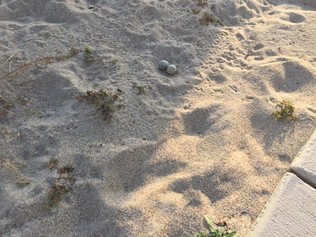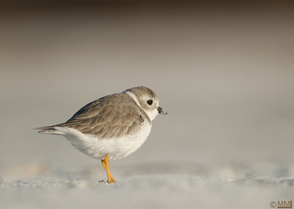FSA Events:
August 10th, 6-9pm: Suncoast Shorebird Partnership Volunteer Party! Environmental Studies Auditorium (ES 100), Eckerd College. Potluck and presentations. RSVP at hshort@audubon.org.
Reminders:
August 5-11: The final Count Window for the statewide Breeding Bird Protocol. Please survey your routes, check your rooftops, and report your surveys in the Florida Shorebird Database (even if you don’t see nests or chicks).
Remember to report banded Black Skimmers on the new and improved Black Skimmer Banding Form!
 Ground Colonies Face Tough Odds in South Florida
-Article and photo by Natasha Warraich
Ground colonies of beach-nesting birds are rare in South Florida due to the popularity of the beaches for recreation and development. This year, there were eight ground colonies in South Florida. Some were in areas where least terns tried to nest in the past and others were brand new!
Five colonies were on beaches, two were at nuclear power plants, and one was at a construction site. Of those, three did not produce any fledged chicks (that we know of), three were abandoned at some point during the season, and two are still actively nesting. Monitoring these sites can be challenging due to their location. For example, the two colonies located at the nuclear power plants made them difficult to monitor. However, one of the greatest challenges ground colonies face is the lack of public understanding about beach-nesting birds and why the beach nesting areas need to be closed. Breeding space is so limited in South Florida that one colony of least terns in Fort Lauderdale nested between sidewalks that condo residents use to access the beach. Educating nearby residents and tourists about the rarity of the birds and their need for space is an essential task that requires ongoing support.
If you would like to get involved in monitoring a ground colony in South Florida next year, please contact shorebird@myfwc.com to get involved. One of the most important things we can do to help ground nesting birds is to increase awareness and stewardship to protect them. To do that we need your help as monitors and beach stewards!
(photo of Least Tern nest by beach access sidewalk in Ft. Lauderdale)
|
 Evaluating the Impacts of the Deepwater Horizon Oil Spill on Piping Plovers
Virginia Tech recently published a paper in Biological Conservation on the impacts from the Deepwater Horizon oil spill on piping plover demography.
Some salient themes from the paper include:
There
was no observed effect of the spill or the subsequent cleanup on piping plover
demography. Although the project did not study the early
months of the spill, given the migration schedule, it is unlikely that a large
group of plovers was affected prior to survey efforts in late August.
The authors suggest these types of demographic
analyses should be employed for similar questions. For disaster response scenarios, the methods
in this study allow for an analytic assessment of damage from a disturbance
that is directly related to population persistence.
The authors also suggest that long term assessments
be employed regardless of short term effects. There were no consistent long-term effects on demography, but
continued monitoring through a variety of projects was necessary to establish
that.
Read the entire paper here.
(photo by Mia McPherson)
|

August 5th - 11th is the final Count Window of Florida’s statewide breeding shorebird and seabird survey. This window focuses on counting chicks and fledglings that were produced this season. Although this is the last Count Window of the 2017 breeding bird protocol, we highly encourage you to continue weekly surveys as long as chicks and nesting birds are observed in your area.
The deadline for entering the 2017 data is October 1st. As a reminder, please report shorebird and seabird chicks in the Florida Shorebird Database (FSD) as follows:
1. Solitary shorebird chicks (e.g., oystercatchers, plovers) that are still inside the nest cup are counted as Nestlings at their nest site (on the Shorebird Nest Form and under “my solitary sites” in the FSD).
2. Seabird chicks (e.g., skimmers, terns) of any age that are still within view of the colony are counted at their colony nest site (on the Seabird Colony Form and under “my colonial sites” in the FSD).
3. Once shorebird chicks are observed outside the nest cup or seabird chicks are out of view of the colony, report them as roving chicks (on the Roving Chicks Form and under “my roving chicks” in the FSD).
IMPORTANT: Please report chicks either at the nest site or as roving chicks on the same visit, or they will be double-counted. For more details, read the Breeding Bird Protocol and contact FlShorebirdDatabse@myfwc.com with questions.
When reporting chicks, we only ask for general age categories – downy, feathered, or flight-capable. If you would like to hone your chick-aging skills, check out the Aging Guides on the Florida Shorebird Alliance website.

A least tern at Outback Key looks on approvingly at art designed by a young shorebird enthusiast for Audubon Florida.
(photo by Lorraine Margeson)
|